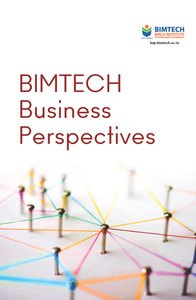
1 Department of Commerce, Periyar University, Salem, Tamil Nadu, India
Creative Commons Non Commercial CC BY-NC: This article is distributed under the terms of the Creative Commons Attribution-NonCommercial 4.0 License (http://www.creativecommons.org/licenses/by-nc/4.0/) which permits non-Commercial use, reproduction and distribution of the work without further permission provided the original work is attributed.
The fashion industry plays a significant role in shaping emotional well-being, intertwined with the broader impact of globalisation. Amid this transformative era, the fashion sector faces profound changes, notably propelled by the emergence of fast fashion. This phenomenon redefines success by offering consumers extensive clothing options at affordable prices and facilitating frequent wardrobe updates. This study, employing a sample size of 100 respondents selected through the snowball technique, examines the influence of demographic segmentation on the rationale for clothing purchases. By delving into demographic factors such as age, gender and income, it aims to unravel the complexities of consumer behaviour within the dynamic fashion landscape. Understanding the intricate interplay between demographic characteristics and consumer preferences is pivotal for effective market segmentation, empowering corporations to tailor their strategies and offerings to meet diverse customer needs. This research highlights that there is no significant impact of age or income on the reason for buying clothes.
Fashion, fast fashion, clothes, wardrobe, consumer behaviour
Abrar, M., Sibtain, M. M., & Shabbir, R. (2021). Understanding purchase intention towards eco-friendly clothing for generation Y and Z. Cogent Business and Management, 8(1). https://doi.org/10.1080/23311975.2021.1997247
Blas Riesgo, S., Lavanga, M., & Codina, M. (2023). Drivers and barriers for sustainable fashion consumption in Spain: A comparison between sustainable and non-sustainable consumers. International Journal of Fashion Design, Technology and Education, 16(1), 1–13. https://doi.org/10.1080/17543266.2022.2089239
Bläse, R., Filser, M., Kraus, S., Puumalainen, K., & Moog, P. (2024). Non-sustainable buying behavior: How the fear of missing out drives purchase intentions in the fast fashion industry. Business Strategy and the Environment, 33(2), 626–641. https://doi.org/10.1002/bse.3509
Chi, T., Gonzalez, V., Janke, J., Phan, M., & Wojdyla, W. (2023). Unveiling the soaring trend of fashion rental services: A U.S. consumer perspective. Sustainability (Switzerland), 15(19). https://doi.org/10.3390/su151914338
Dangelico, R. M., Alvino, L., & Fraccascia, L. (2022). Investigating the antecedents of consumer behavioral intention for sustainable fashion products: Evidence from a large survey of Italian consumers. Technological Forecasting and Social Change, 185. https://doi.org/10.1016/j.techfore.2022.122010
Djafarova, E., & Bowes, T. (2021). ‘Instagram made me buy it’: Generation Z impulse purchases in fashion industry. Journal of Retailing and Consumer Services, 59. https://doi.org/10.1016/j.jretconser.2020.102345
Han, M. S., Hampson, D. P., Wang, Y., & Wang, H. (2022). Consumer confidence and green purchase intention: An application of the stimulus-organism-response model. Journal of Retailing and Consumer Services, 68. https://doi.org/10.1016/j.jretconser.2022.103061
Invest India. (n.d.). Textile industry in India: Insights into the garment & apparel.... Retrieved, 16 May 2024, from https://www.investindia.gov.in/sector/textiles-apparel
Khare, A. (2020). Antecedents to Indian consumers’ perception of green apparel benefits. Research Journal of Textile and Apparel, 24(1), 1–19. https://doi.org/10.1108/RJTA-04-2019-0016
Mandari?, D., Hunjet, A., & Vukovi?, D. (2022). The impact of fashion brand sustainability on consumer purchasing decisions. Journal of Risk and Financial Management, 15(4). https://doi.org/10.3390/jrfm15040176
McKinsey. (n.d.). The state of fashion 2024 report. Retrieved, 16 May 2024, from https://www.mckinsey.com/industries/retail/our-insights/state-of-fashion
Milne, G. R., Villarroel Ordenes, F., & Kaplan, B. (2020). Mindful consumption: Three consumer segment views. Australasian Marketing Journal, 28(1), 3–10. https://doi.org/10.1016/j.ausmj.2019.09.003
Morgan, L. R., & Birtwistle, G. (2009). An investigation of young fashion consumers’ disposal habits. International Journal of Consumer Studies, 33(2), 190–198. https://doi.org/10.1111/j.1470-6431.2009.00756.x
Paço, A., Leal Filho, W., Ávila, L. V., & Dennis, K. (2021). Fostering sustainable consumer behavior regarding clothing: Assessing trends on purchases, recycling and disposal. Textile Research Journal, 91(3–4), 373–384. https://doi.org/10.1177/0040517520 944524
Papadopoulou, M., Papasolomou, I., & Thrassou, A. (2022). Exploring the level of sustainability awareness among consumers within the fast-fashion clothing industry: A dual business and consumer perspective. Competitiveness Review, 32(3), 350–375. https://doi.org/10.1108/CR-04-2021-0061/FULL/XML
Park, H. J., & Lin, L. M. (2020). Exploring attitude–behavior gap in sustainable consumption: Comparison of recycled and upcycled fashion products. Journal of Business Research, 117, 623–628. https://doi.org/10.1016/j.jbusres.2018.08.025
Ponnambalam, S. G., Sankaranarayanan, B., Karuppiah, K., Thinakaran, S., Chandravelu, P., & Lam, H. L. (2023). Analysing the barriers involved in recycling the textile waste in India using fuzzy DEMATEL. Sustainability (Switzerland), 15(11). https://doi.org/10.3390/su15118864
Rathinamoorthy, R. (2019). Consumer’s awareness on sustainable fashion. Handbook of research on emerging business models and managerial strategies in the nonprofit sector (pp. 1–36). https://doi.org/10.1007/978-981-13-1262-5_1
Saha, I., Bhandari, U., & Mathew, D. J. (2019). A study on consumer awareness towards green fashion in India. Smart Innovation, Systems and Technologies, 134, 483–494. https://doi.org/10.1007/978-981-13-5974-3_42
Shirvanimoghaddam, K., Motamed, B., Ramakrishna, S., & Naebe, M. (2020). Death by waste: Fashion and textile circular economy case. Science of the Total Environment, 718, 137317. https://doi.org/10.1016/J.SCITOTENV.2020.137317
Statista Market Forecast. (n.d.). Fashion—Worldwide. Retrieved, 16 May 2024, from https://www.statista.com/outlook/emo/fashion/worldwide
Tryphena, R., & Aram, I. A. (2023). Consumer perception on sustainable clothing among urban Indians. Journal of Engineered Fibers and Fabrics, 18. https://doi.org/10.1177/15589250231168964
Vladimirova, K. (2021). Consumption corridors in fashion: Deliberations on upper consumption limits in minimalist fashion challenges. Sustainability: Science, Practice, and Policy, 17(1), 103–117. https://doi.org/10.1080/15487733.2021.1891673
Yi?it, M. K. (2020). Consumer mindfulness and impulse buying behavior: Testing moderator effects of hedonic shopping value and mood. Innovative Marketing, 16(4), 24–36. https://doi.org/10.21511/im.16(4).2020.03
Zhang, Y., Liu, C., & Lyu, Y. (2023). Profiling consumers: Examination of Chinese Gen Z consumers’ sustainable fashion consumption. Sustainability, 15(11), 8447.